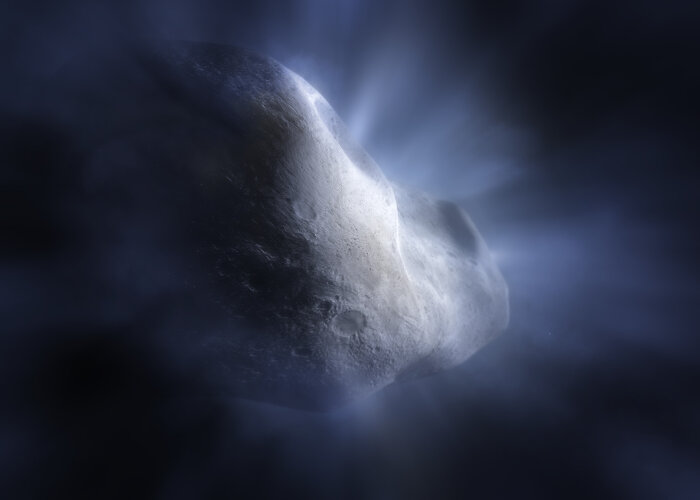
“In the past we’ve seen objects in the main-belt with all the characteristics of comets, but only with this precise spectral data from Webb can we say yes, it’s definitely water ice that is creating that effect,” explained astronomer Michael Kelley of the University of Maryland, lead author of the study.
“With Webb’s observations of Comet Read, we can now demonstrate that water ice from the early Solar System can be preserved in the asteroid belt,” Kelley said.
The missing carbon dioxide was a bigger surprise. Typically carbon dioxide makes up about 10 percent of the volatile material in a comet that can be easily vapourised by the Sun’s heat. The science team presents two possible explanations for the lack of carbon dioxide. One possibility is that Comet Read did have carbon dioxide when it formed, but has lost that because of warm temperatures.
“Being in the asteroid-belt for a long time could do it – carbon dioxide vaporises more easily than water ice, and could percolate out over billions of years,” Kelley said. Alternatively, he said, Comet Read may have formed in a particularly warm pocket of the Solar System, where no carbon dioxide was available.
The next step is taking the research beyond Comet Read to see how other main-belt comets compare, says astronomer Heidi Hammel of the Association of Universities for Research in Astronomy (AURA), lead for Webb’s Guaranteed Time Observations for Solar System objects and co-author of the study. “These objects in the asteroid belt are small and faint, and with Webb we can finally see what is going on with them and draw some conclusions. Do other main-belt comets also lack carbon dioxide? Either way it will be exciting to find out,” Hammel said.
Co-author Milam imagines the possibilities of bringing the research even closer to home. “Now that Webb has confirmed there is water preserved as close as the asteroid belt, it would be fascinating to follow up on this discovery with a sample collection mission, and learn what else the main-belt comets can tell us.”
The study is published in the journal Nature.



